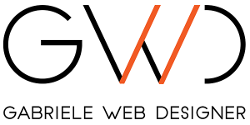Create accessible website allows to people with various disability to access free to web content. When a website is accessible, anyone can access it, regardless of their psychomotor skills and the device used to navigate. Web accessibility is one of the primary targets of the W3C, the consortium of web standards, which has also drawn up the rules for website compliance.
accessibily recipients
Allowing disabled people to use websites is an important step on the path towards respect for all web users . Especially towards those who have the following disabilities:
- low vision
- blindness
- deafness
- mobility disabilities
- difficulty understanding
Thanks to assistive technologies such as braille display, screen reader, screen magnifiers and various input devices, blind and bodily disabled can still navigate various websites.
They are not the only users who benefit from accessible websites. Seniors with poor eyesight read well on the screen thanks to the large text characters and the possibility of further changing their size. Deaf people can freely access videos on the web thanks to specifically drafted subtitles. Users with outdated computers easily access the website by seeing it adapt to the size of their screen thanks to the responsive design.
These are just some of the advantages of web accessibility. Whether you use assistive technology, an old computer, a laptop, a tablet or a smartphone, there are no barriers of any kind.
accessibility priority levels
Accessible websites are identified by 3 different accessibility checkpoints, marked with one, two or three letters "A".
- First level (A): this checkpoint indicates what the website must guarantee to allow certain categories of users to access the website and web documents.
- Second level (double-A): this checkpoint indicates what the website should guarantee. Otherwise one or more categories of users will have difficulty accessing the site and its contents. Compliance at this checkpoint eliminates significant barriers to free access to the website.
- Third livello (triple-A): this checkpoint indicates what the website could guarantee to improve its access considerably. Otherwise some categories of users will have difficulty accessing the information of some web documents.
how to get accessible websites
The accessibility of websites is achieved only with correct design. It is therefore important to rely on a professional web designer. Using a correct marking language and specific rules of the code makes the website compliant with WCAG 2.0: the guidelines for the content accessibility on the web.
All types of websites can be made accessible. The CMS have become very common in recent years and some of its are specifically designed for accessibility. It should be noted that behind an accessible website there is not only a software, but also a person capable of correctly inserting the contents. The texts, for example, must be treated specifically so that they can be understood by everyone.
In the future, some contexts of accessibility could become a ranking factor for SEO. Those who will have invested, making their site as accessible as possible, would benefit about it.




